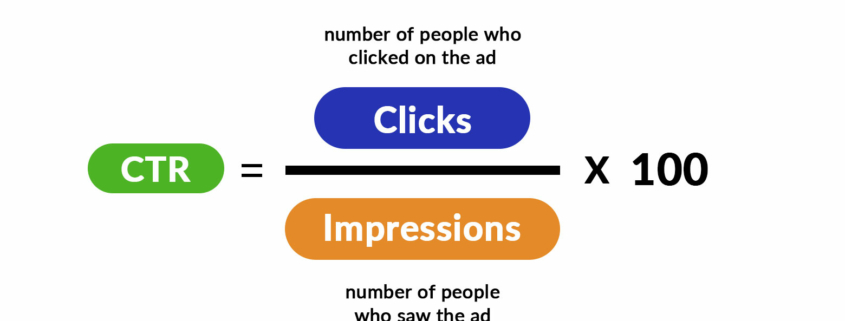How Do You Get a Higher Click-Through Rate?
Are you trying to get ahead in the digital marketing game? Well, if you don’t understand or optimize your click-through rate (CTR), you won’t get very far. We know what your next questions are. How is CTR measured? Why does it matter so much? Allow us to explain! Let’s look at this aspect of an ad campaign and what makes a good click-through rate (so that you can hit that goal for yourself).
Defining Click-Through Rate
Click-through rate (CTR) is a measurable, important metric and KPI (a fancy acronym for key performance indicators) that gauges the effectiveness of an online advertising campaign. Advertisers evaluate their ad performance through CTR to make decisions about their advertising budget or how to proceed with ads.
Here’s the click-through rate formula: the total number of clicks divided by the total number of times your ad was viewed. Multiply that number by 100, and you have your CTR. Let’s look at an example. If you had 1,000 impressions (times people saw your ad) and 100 clicked on it, that would be an average CTR of 10%.
A high CTR means people (hopefully your target audience) saw your ads and were intrigued enough to click through to your landing page. An average click-through rate for a search ad is about 1.9%, while it’s .4% for a display ad. Ecommerce ads have an average CTR of just over 2%.
Missing the Mark
Hey, this happens. Not a huge problem – we’ll guide you. A low CTR can be caused by a variety of factors. One issue may be that your ad is not relevant to your target audience’s interests or needs. At the end of the day, if your ad isn’t resonating with your target audience, it’s time to revisit your strategy. Another issue may be that your ad isn’t compelling enough for people to want to click on it. The ad could feel relevant to them, but they won’t click if they don’t know (or care) what they get out of it.
Are you suffering from low CTR? Test new ad copy and creative separately. Both the copy and the image or video accompanying the ad determine whether or not someone clicks. Test new ones frequently to see what your audience likes.
When Is CTR measured?
CTR is the best way to see if you’re connecting with your audience, and there are plenty of places to measure it.
Online Advertising
Display ads, search engine ads, and social media ads are all different types of online advertising. Anywhere you put an ad online, you can measure the click-through rate.
Email Marketing Campaigns
Email click-through rate measures how effective email campaigns are. These include newsletters, promotional emails, and transactional emails. Do you have a good open rate (how many times the email is opened)? What’s the bounce rate (the emails not delivered to an inbox)? Remember: a snazzy subject line means a good CTR and open rate.
Search Engine Optimization (SEO)
Your SEO strategy puts you on top of the results page, but are searchers actually clicking on your page? Look at the CTR for your Google Ads to see if there’s a problem.
Pay-Per-Click (PPC) Ads
PPC ads (ex: Google Ads) are perhaps the most connected to your click-through rate because you pay for each one. They have a clear call to action (CTA) that entices the visitor to click, and the advertiser is charged a fee based on the cost-per-click (CPC) bid set for the ad. Think of it like an auction. People bid for clicks, but the highest bid doesn’t always win. Google AdWords wants quality to factor into ads.
The Difference Between Click-Through Rates and Conversion Rates
Both CTR and conversion rate are important metrics, but they aren’t interchangeable. A higher CTR is a higher number of people clicking through your ads. Having a high click-through rate can be great, but it means next to nothing if you don’t know your conversion rate.
You already know what CTR is. A conversion rate, on the other hand, measures how effective a website or landing page is. If your landing page has a form for the user to enter their email, the number of emails you get divided by the number of people who visited the page (times 100) is your conversion rate. If you have a high CTR but a low conversion rate, it’s time to audit your landing page. In this case, your ad works, but your page doesn’t convince people to follow through with your call to action.
Improve Your CTR
You can improve your click-through rate by using the following tips:
-
- Good design: create an ad that people will want to click on.
- Good copy: any and all text should be relevant, compelling, and engaging enough that someone wants to click and find out more.
- Do some A/B testing: compare two versions of the ad and present them randomly to different customers or groups. Use the “winner” to make more similar variants.
Need a Win? Call Lift Marketing
As you can see, click-through rates are an important metric that all effective marketers need to monitor and understand. But why struggle with such complex concepts when Lift Marketing is here to do the work for you? Contact us now to get started. You won’t regret it – after all, we understand digital marketing better than anyone else.













